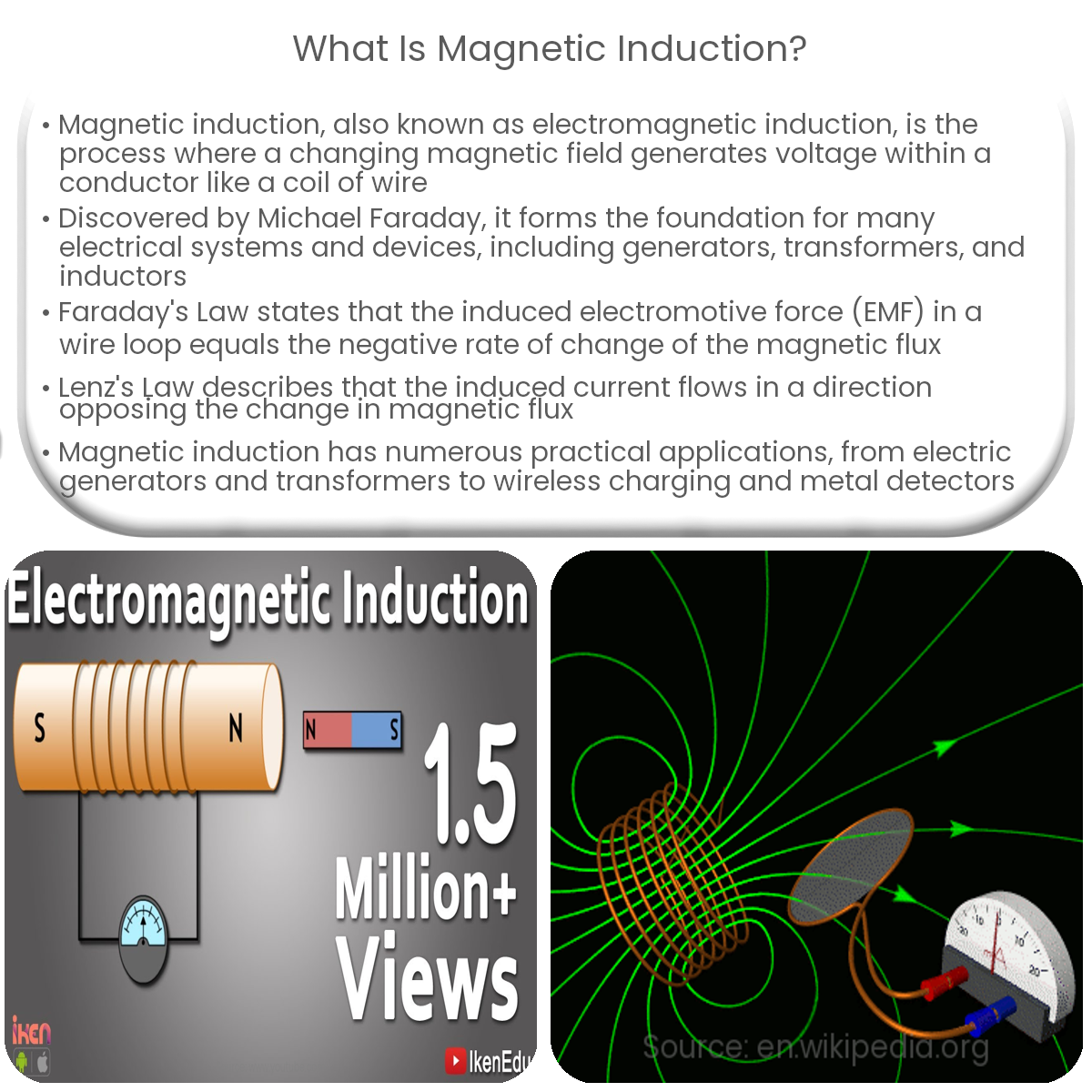Magnetic induction is a phenomenon where a changing magnetic field generates an electromotive force (EMF) within a conductor, such as a coil of wire.
Understanding Magnetic Induction
Magnetic induction, also known as electromagnetic induction, is a phenomenon in which a changing magnetic field generates an electromotive force (EMF) or voltage within a conductor, such as a coil of wire. This fundamental principle, discovered by Michael Faraday in 1831, is the basis for many electrical devices and systems, including generators, transformers, and inductors.
Faraday’s Law of Electromagnetic Induction
Faraday’s Law states that the induced EMF in a closed loop of wire is equal to the negative rate of change of the magnetic flux through the loop. Mathematically, it is represented as:
EMF = -dΦB/dt
where EMF is the electromotive force, ΦB is the magnetic flux, and t is the time. The negative sign indicates that the induced EMF opposes the change in magnetic flux, as described by Lenz’s Law.
Lenz’s Law
Lenz’s Law is a fundamental principle that helps to determine the direction of the induced EMF and current in a conductor. According to Lenz’s Law, the induced current always flows in a direction that opposes the change in magnetic flux that created it. This law is a consequence of the conservation of energy, as it prevents the creation of energy from nothing.
Applications of Magnetic Induction
Magnetic induction is an essential concept in the field of electromagnetism and has numerous practical applications, including:
- Electric generators: In generators, mechanical energy is converted into electrical energy by rotating a coil within a magnetic field, inducing a voltage and current.
- Transformers: Transformers use magnetic induction to transfer electrical energy between two coils with different numbers of turns, changing the voltage level.
- Inductors: Inductors store energy in their magnetic fields when current flows through them, and release the energy when the current decreases, opposing changes in current.
- Wireless charging: Inductive coupling is used in wireless charging systems to transfer energy between two coils without a physical connection.
- Metal detectors: Magnetic induction is employed in metal detectors to identify the presence of metallic objects by inducing eddy currents in the metal and detecting the resulting magnetic field.
In summary, magnetic induction is a fundamental principle in electromagnetism with wide-ranging applications in various electrical devices and systems. It allows for the conversion of mechanical energy into electrical energy, as well as the transfer of energy between circuits and the storage of energy in magnetic fields.


